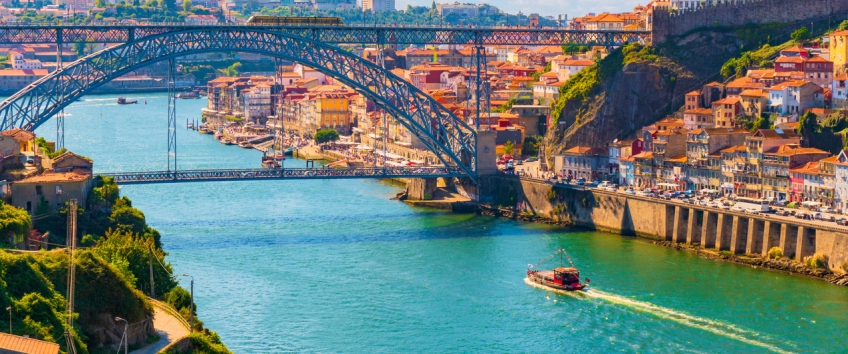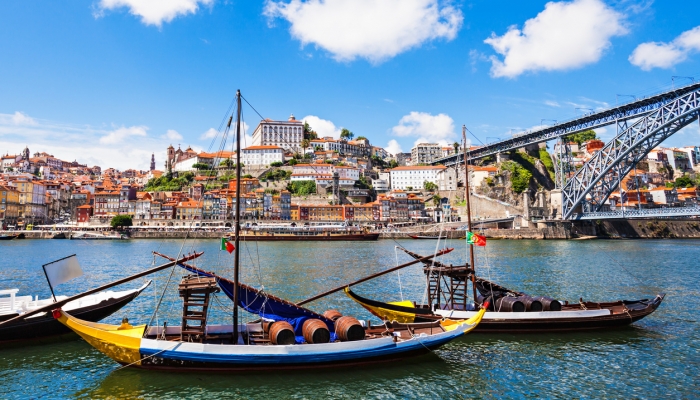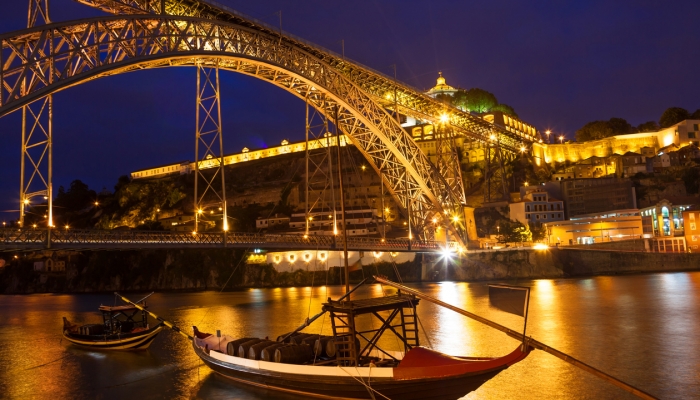Rabelo Boat - History and Curiosities
History and curiosities
2021-06-28

Rabelo Boat History
Before the creation of roads and railroads, the distant and remote Port Wine estates were only accessible by river. It was here that the delicious Port Wine, the gold of Portugal for a long time, was made and could not remain forgotten. It had to be shown to the world. It had to be appreciated by the world. And so, the Rabelo Boats had a preponderant role in the dignification of this delicious Portuguese Wine.
The origin of these boats is diluted in time. There are reports that place it in the Douro River as far back as the 13th century, but it was only in 1792 that the Companhia Geral da Agricultura das Vinhas do Alto Douro published the alvarás related to the boat, determining its load limits and sailing hours (it was forbidden, for example, to sail at night).
At this time, the Douro River was boiling with fury. With unparalleled anger and rage, it only rested when it reached the sea. Until the dams began to be built in the 1970s, this treacherous river had a swift and turbulent current. So its exasperated waters flowed proudly, without pity for anyone they might leave behind. And it was these same waters that the Rabelo Boats broke through, it was these same waters that brave Portuguese sailors crossed.
If, to go down the river all the currents (and saints) helped, to go up it had to rely on the strength of the animals and the men who, from the shore, pulled with the help of ropes. Difficult and sweaty times that the construction of the railway line and the dams (namely the Carrapatelo Dam, in 1972) eased.

Features of the Rabelo Boat
The Rabelo Boat is considered a masterpiece for that time and some of its main characteristics are connected with its design and the name given to each boat.
Design suitable for currents
Being a boat made to maneuver in a mountain river and designed to be able to survive the fast currents of the Douro River, the Rabelo Boat does not have a keel, but a flat bottom built with overlapping planks.
These characteristics bring it closer to the nautical tradition of Northern Europe than to the Mediterranean area. With a length of 19 to 23 meters, it could carry 40 to 100 barrels of Port Wine and a crew of up to 12 men. For its construction there were no fixed shipyards; the vessels were assembled on beaches close to those who ordered the work.
Boats with religious names
The men who drove them, brave sailors, were men of faith. In fact, only with an unshakable belief and the certainty of divine protection could they have the necessary courage to set out on such fateful journeys, always with the uncertainty of whether they would ever set foot on dry land again.
There were incredibly calm journeys, but when the boat was caught in the raging current there was nothing else to do but trust in fate and let oneself be carried along, praying to God or to the Gods.
So, in an attempt to get their prayers to Heaven faster, it was customary to give the Rabelo Boats religious names, and many shrines were built and wonderful paintings drawn on the cliffs overlooking the most dangerous canyons. Often they were not enough but they at least gave the crew confidence. Hope…

Despite being strong men skilled at sailing, many lives were lost on this river, including that of Baron Forrester who died in 1861, drowned with his legendary money belt full of gold. Some say he was one of the first to drown due to the bulky weight of the belt.
However, despite these merciless waters, many Rabels made it to port and thousands of barrels made it to the cool Port Wine Cellars. From here Port Wine was sent to the world!
When did the Rabelo Boat stop being used?
The first Douro railroad was finished in 1887. From then on, the legacy of the Rabelo Boat began to fall away, as the river ceased to be the only option for transporting goods.
But even so, these boats did not fall into disuse for decades. In fact, it is believed that the last Rabelo to transport barrels of wine through the Douro River took place in 1971. Today, Port Wine is transported from the Douro Demarcated Region to the cellars in Vila Nova de Gaia by modern tanker trucks.
Nowadays, the traditional rabelos continue to embellish the Douro River. However, they only exist as advertising media or for sightseeing tours.
A cruise along the banks of Porto and Vila Nova de Gaia in replicas of these boats is well worth it and is a must for anyone visiting the city of Porto.
We invite you to embark on the Cruise of the 06 Bridges and enjoy the natural beauty of the banks of the Douro River, in a relaxing panoramic ride on a typical Rabelo boat, lasting 50 minutes. It is an excellent opportunity to appreciate the Bridges that unite Porto and Vila Nova de Gaia and the precious historical heritage of both cities. It will, for sure, be a moment to remember later!
Rabelo Boat Curiosities
And on Saint John's day, June 24th, one of the most awaited events of the year takes place: the so-called "Rabelo Boat Regatta". The Port Wine Brotherhood annually organizes this "race" of Rabelo boats, in order to perpetuate in memory the ways of life that gave birth to what is now the Douro and its wine-growing region (classified as World Heritage, in the category of cultural landscape).
The trip starts at the mouth of the Douro River and ends at Luiz I Bridge, on the Vila Nova de Gaia side. Every year, the boats anchored there get a new lease of life and the river is once again teeming with life and people. An event that further embellishes the banks of the Douro and helps keep alive this proudly Portuguese history.
